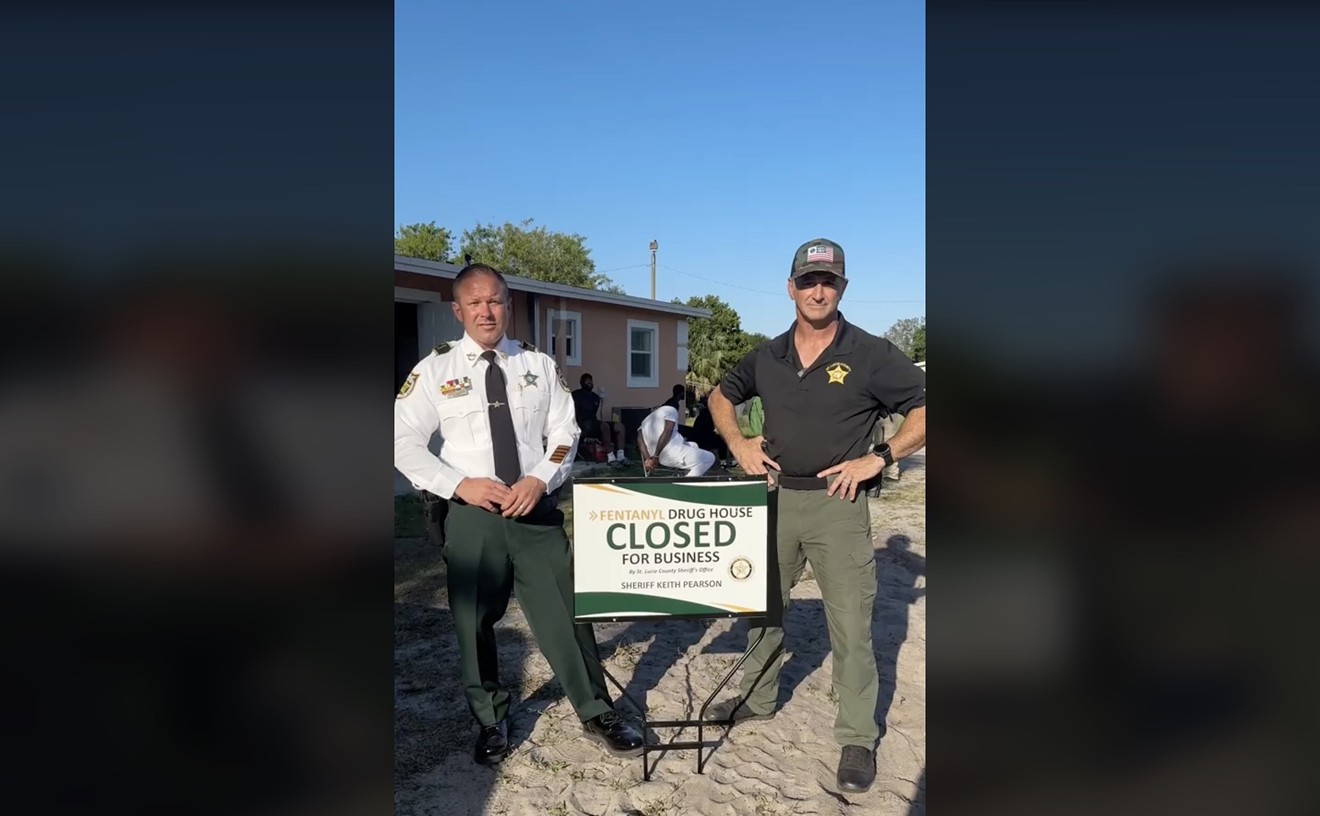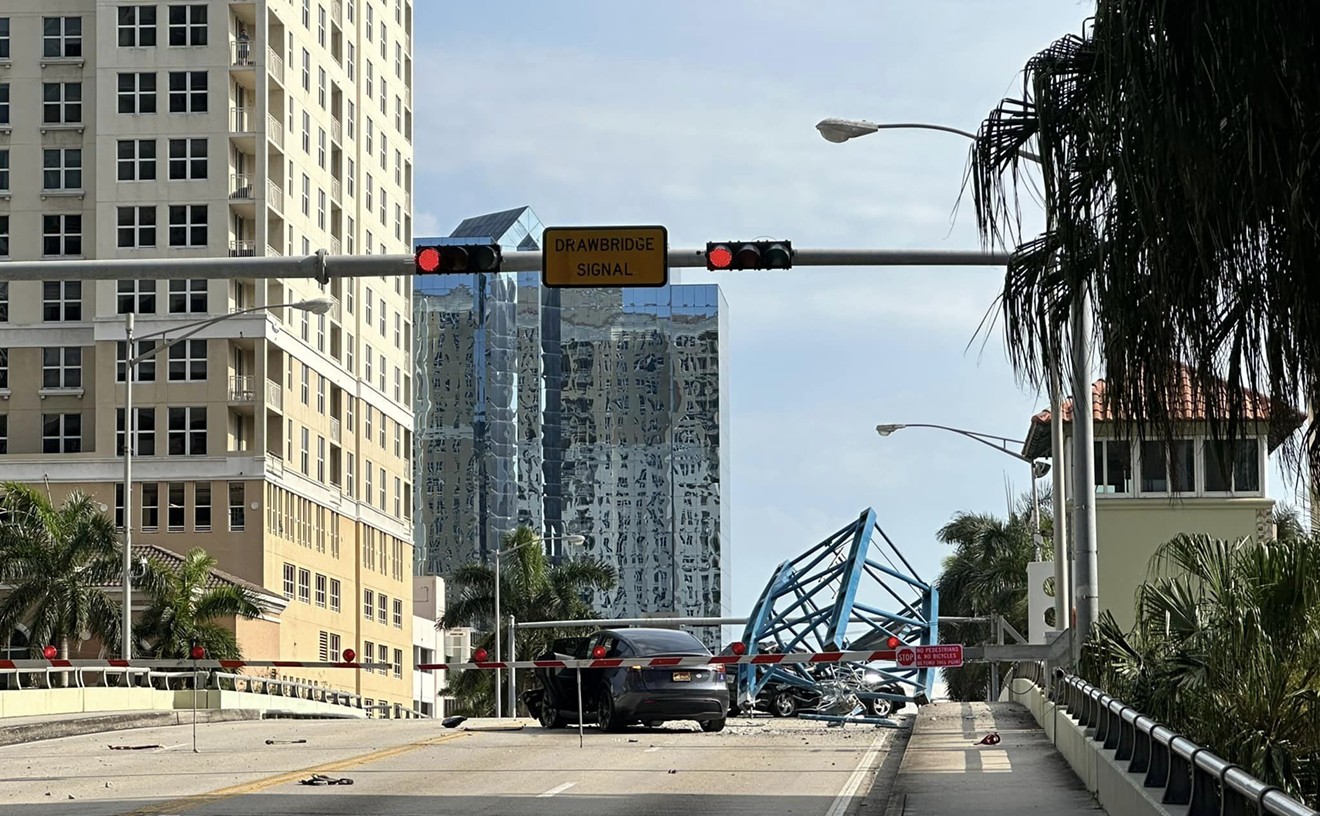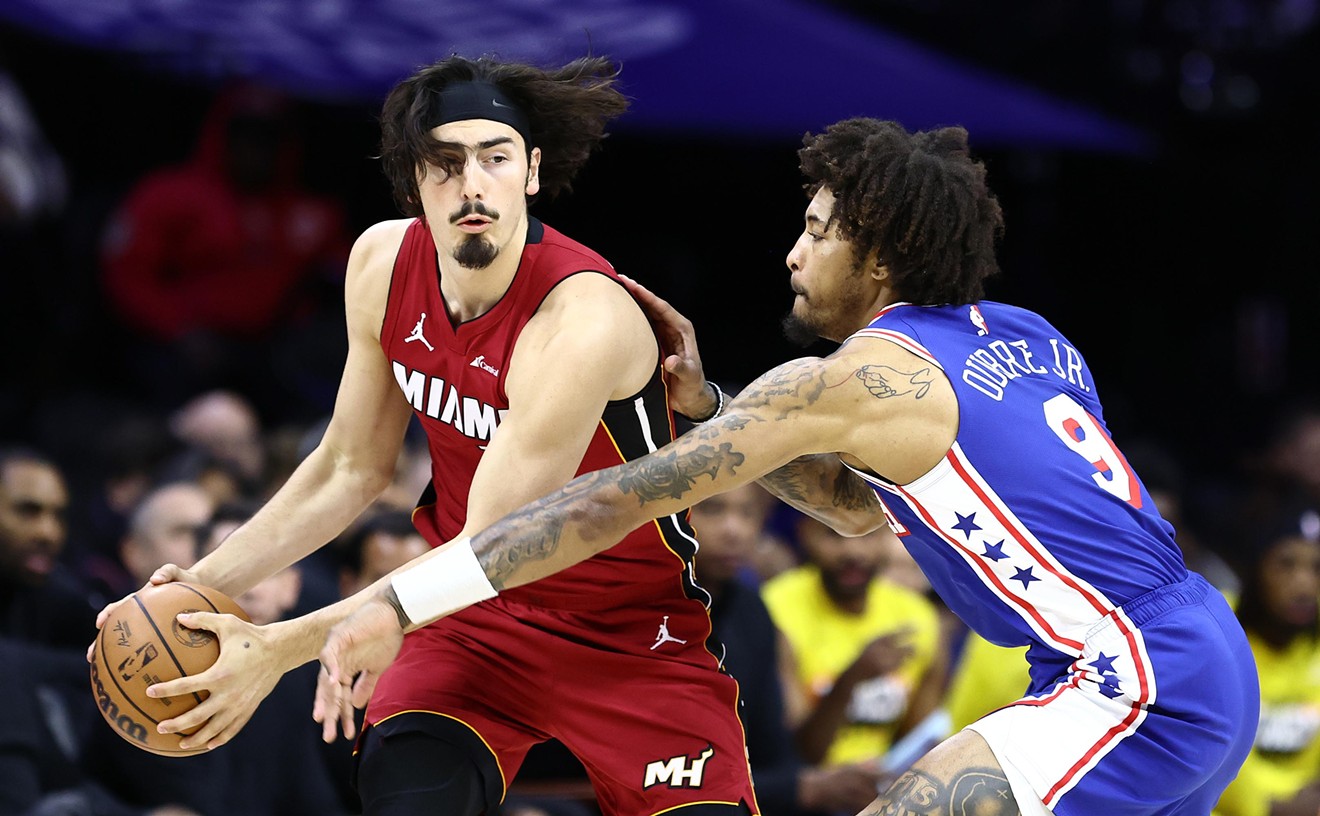From the moment he pulls up to the dilapidated pink building in Overtown, Lesther Jorge knows they are there. He sees a heavyset female pacing in the back of the abandoned lot, her head nervously bobbing up and down. Then he spots a male guarding the entrance to the building's secluded back yard like a sentry. Jorge approaches stealthily and sneaks through an opening in the wire fence surrounding the yard. All of a sudden, dozens spill out of the bushes. Chickens.
There are gray ones, calico ones, plump and small ones, roosters and hens and chicks. In a city full of immigrants, stray poultry is everywhere. Until recently, Jorge was their cop. He pursued his targets the way Ahab hunted Moby Dick, the way John Walsh chases America's Most Wanted.
But this past October, city commissioners discontinued Chicken Busters, the $20,000-a-year program that paid Jorge's salary. Now he's a stock boy at a Sedano's in Homestead. And chickens have run amok.
"They need to be gathered up," says a slender 60-year-old woman named Aretha M., who lives in the same Overtown tenement besieged by fowl." So many gather outside her door in the morning that she sometimes has to throw water to scatter them. "They're a nuisance."
Miami's popular Chicken Busters program began seven years ago with just a city inspector and volunteer firefighters working in their spare time. It quickly grew in both reputation and effectiveness. Good Morning America and ESPN even aired feature pieces.
Over the years, 16,000 stray chickens were trapped and sold to farms in the Redland. Net proceeds: $10,000, which was donated to charity.
Bill Borges, a grandfatherly 57-year-old city code inspector, was the first volunteer Chicken Buster. The program was launched to address complaints from residents who couldn't stand the inconvenience of the birds or the morning crowing.
"In those days, the problem was severe. I remember working in Little Havana, and 50, 70 chickens would come up to you, expecting to be fed," Borges says.
Jorge began working in 2006 as the first full-timer. The 41-year-old has a round, sunburned country face and slicked-back salt-and-pepper hair. With his steel-toed boots, cargo pants, and a navy Chicken Busters T-shirt, he's Clark Gable of the poultry set.
When he took the minimum-wage, no-benefits job, he had been in the United States for only a year. Chasing hens and roosters for dinner in eastern Cuba's countryside, where he grew up, had been as common as buying a burger at a drive-thru in Miami.
In a way, he'd been training to chicken-bust his whole life. "I brought a hick's cunning to the job," he says. "It was something I'd been doing since I was a boy."
As time passed, he improved. "It got to the point that I had one in the net and I picked two more with my hands." Inspectors and firefighters would occasionally volunteer, but it was Jorge's face that neighbors would remember.
The Chicken Busters were in their prime. Mayor Manny Diaz spent three hours trapping birds, and ESPN featured the program. In 2007, ABC's Good Morning America profiled Jorge and the team, comparing them to their namesakes, the Ghostbusters.
When the city faced a $118 million deficit last year, code enforcement decided it was someone else's job to pick up stray chickens. "It's not required by the charter, but it's a service we liked to provide," director Sergio Guadix said. "Unfortunately, we were hit with a budget crisis."
On a recent uncharacteristically overcast Sunday, Jorge and Borges give New Times a tour of some problem neighborhoods. Around 9 a.m., they approach a large yard on the corner of NW 11th Street and Third Avenue. It's as overrun with chickens as it was with soot and weeds.
The yard is eerily quiet, like that part in Aliens when Ripley stumbles into the queen mother's nest. About two dozen birds nest or peck at the ground. Only the occasional cluck and the highway whir disturb the morning idyll.
Jorge was here last April and then in September, when he successfully cleared it of all stray birds. But the fowl have returned with a vengeance.
"'Ño!" he says incredulously, using a Cuban profanity. "What is this! What is this?"
A few minutes later, the answer appears. Harry Wilson, a 63-year-old tenant of a nearby building, ambles through the back door. He has a runny nose and holds a half-filled tobacco pipe, as well as some Wonder Bread for the birds. "Cats used to get 'em," he says. "But no mo'."
It's a Sunday, so Borges can't cite Wilson or any nearby landlords. But keeping roosters in the city is illegal, and chickens must be caged. Homeowners can be fined $50 to $250 per day. There's an enforcement problem, though, because chickens tend to wander around the neighborhood and it's difficult to know to whom they belong.
Jorge recalls there were hazards to the job. He once brushed up against a palm tree in Little Havana and became covered in chicken lice. Plus the heat was unbearable. "The job is nothing but the chase and sweating," he says.
Later, in Flagami, Jorge and Borges visit Ramona Lopez. The 60-year-old with wild hair and a moth-eaten cardigan greets the busters. She can't believe she left the heart of Havana for these chicken-rife backwoods. "It's not that we hate animals, but this isn't the countryside," she sighs, noting that she also throws water at the birds when they become raucous. "I'm too old to be chasing after chickens. [Jorge] was a relief."
Although a corps of inspectors could conceivably cart away chickens, notes Borges, it's a special skill. "There are inspectors here who could spend five years chasing chickens and never catch any," he notes. "One, because they don't like it, and two, because they don't have the skill."
The two former Chicken Busters end their tour midafternoon in Little Havana, where Jorge orders arroz con pollo. He hasn't caught live fowl since October but says he would get back in the saddle whenever the city wants him to. His old catching truck sits with a flat tire in the city's downtown parking lot. Just last month, the Discovery Channel aired a feature on the Chicken Busters without noting Jorge has been laid-off.
"I miss the job, and I did it well," Jorge says. "And you know what? I'm convinced many people miss me too. They say, 'Whatever happened to that guy with the chickens?'"
----------
Lesther Jorge's Guide to Catching Chickens
1. Arm yourself: heavy boots, fishing net.
2. Expect a platoon of chickens, but don't play their head games. "I always told the volunteers: 'You gotta fall in love with one. Concentrate. You're not gonna catch them all.'"
3. Corner the beast and be ready to jump. These aren't your grandpa's chickens. "I saw them fly distances I'd never seen them do in Cuba."
4. Run. "The job is nothing but the chase and sweating."










